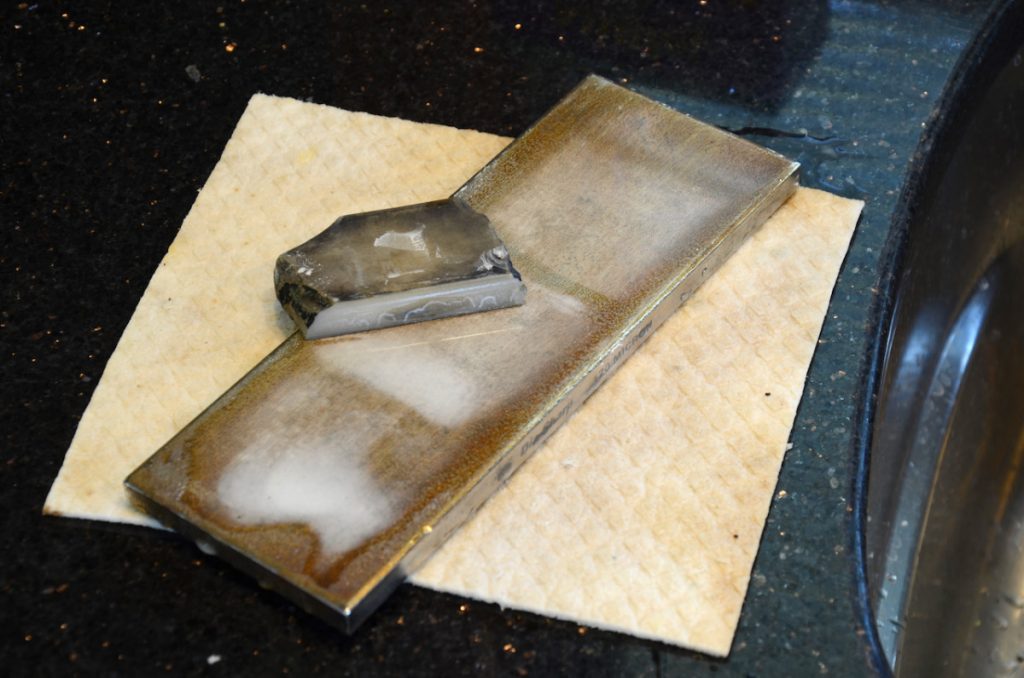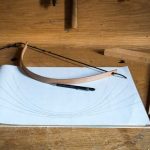We may receive a commission when you use our affiliate links. However, this does not impact our recommendations.

A few years ago I found a broken and grime-covered segment of a slip stone buried in the soil outside our front porch. Thrilled by this unexpected surprise, I immediately decided to restore the stone and incorporate it into my collection of sharpening tools.
The stone was dished and covered with black grime as a result of many years of use and abuse so I decided to use a coarse diamond stone to dress up all its surfaces – including the narrow and wide vaults on the edges. Diamond stones are the best medium for this job but wet/dry silicon carbide sandpaper over a piece of granite or glass will do the job too.

First I flattened the surface on one face of the stone, then I worked on the vaults, and lastly on the opposite face, but this dressing up order can be arranged differently. The DMT Extra, Extra course stone worked exceptionally well, and with the help of some water that served as a lubricant the job was done fast.


After the coarse stone, I used a finer diamond stone to smooth the surfaces even further and then tested the slip stone on one of my edge tools.
If you have or find a broken slip stone made of natural or synthetic material please don’t hesitate to give it a facelift, as even a broken segment like the one I found can excel in all kinds of sharpening tasks.
Here are some supplies and tools we find essential in our everyday work around the shop. We may receive a commission from sales referred by our links; however, we have carefully selected these products for their usefulness and quality.






![How To Sharpen A Gouge [Video]](https://www.popularwoodworking.com/wp-content/uploads/bfi_thumb/dummy-transparent-olcy6s63it1p9yp7uhusjas7c8kahafrhg9su7q9i0.png)


Truly trash into treasure, the photos of the process were great!